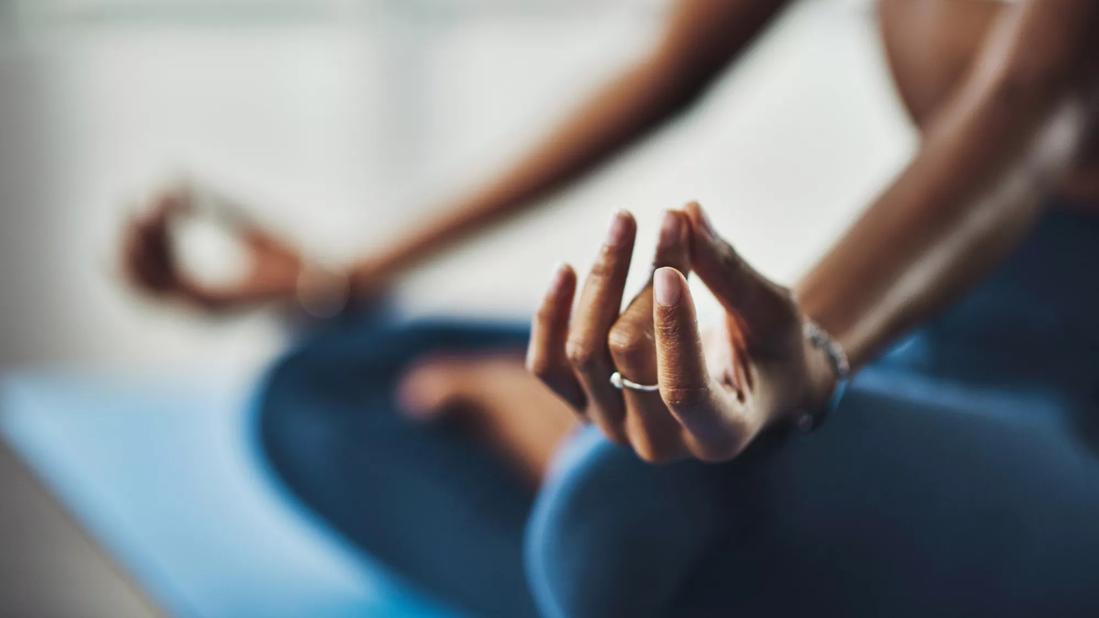Yoga concepts honor those who give and receive care

At first blush, encouraging patients to “share the wheel” in managing their health treatments may sound imprudent. But when caregivers apply a concept of surrender rooted in the ancient practice of yoga, patient satisfaction has been shown to increase and some of the pressure on the clinician is lifted.
Advertisement
Cleveland Clinic is a non-profit academic medical center. Advertising on our site helps support our mission. We do not endorse non-Cleveland Clinic products or services. Policy
Surrender is more of a state of mind rather than one single act, says Tyler Coy, a social work student and RYT200-certified yoga instructor for Cleveland Clinic. A caregiver who approaches daily work with a surrender mindset brings humility to patient interactions. Clinician humility has been studied and shown to positively affect patient satisfaction and trust in caregivers as well as patients’ self-reported health.1
In yoga, surrender means letting go of ego and opening up the heart, says Coy. In healthcare, this can translate to relinquishing some control when appropriate and fostering a collaborative partnership with patients.
“It’s about yielding to our higher power, which in healthcare is humanity,” Coy says. “And allowing the patient to be the guide when possible, as they are the expert in their own body. Sometimes the patient may have the answer.”
He adds that surrendering to the patient is honoring the patient. It is important to recognize that although the caregiver is the clinical expert, the patient often knows what is best.
“Letting the patient have some control takes some of the pressure off the caregiver while empowering the patient a little,” Coy says.
Reflective listening and motivational interviewing are two tools of active surrender that can be beneficial in working with patients, Coy says.
Reflective listening can be done by repeating back to the person what you have heard them express. Saying it out loud shows that you were listening, that you care, and that you want to understand while it also helps them elucidate their thoughts. Reflective listening involves more listening than talking, and requires you to respond objectively with only empathy and acceptance. 2
Advertisement
Motivational interviewing is a communication approach in which you facilitate change by helping the patient find the answer on his own. For example, if you ask a patient what they know about eating salty foods and blood pressure, and the patient answers, you can offer to share more information. At that point you are collaborating, which involves relinquishing some control while empowering the patient.
In addition to using tools of surrender while working with patients, nurses can use mindfulness techniques on their own to foster a surrender mindset. Coy says focusing on the present moment helps set an intention to surrender when you step into your clinical role.
“When you are brushing your teeth, think about what the bristles of the toothbrush feel like in your mouth. Put your phone down for a while when you’re walking and feel the earth underneath your feet,” he says.
Practicing reflection is helpful in a healthcare environment. Reflecting on an interaction with a patient by taking a moment before going on to the next patient allows time for recognizing whether you brought in preconceived notions, talked too much or didn’t make an effort to share the wheel. You may want to use those reflections to inform your next interactions.
Practicing yoga is not a requirement for applying surrender to patient care. However, Coy points out two postures that can be useful to do at home.
“In either pose, we may embody surrender to humanity, to the universe, or to that which we cannot control,” Coy says. “Explore each pose and notice how you feel, taking several deep breaths, allowing your belly to expand with each breath.”
Advertisement
Child’s pose: Begin on your hands and knees with the tops of your feet touching the floor. Move your knees wider than hip-width or keep them where they are and gently move your hips back toward your feet. Place your head on the floor and reach your arms forward, relaxing your shoulders. You can also do child’s pose with a table and chair. Sit at the edge of your chair with your feet flat on the floor. Stack your hands in front of you with your elbows wide and place your forehead on your hands. Allow your shoulders and back to relax and breathe.
Savasana/relaxation pose/corpse pose: Lie down on your back or find a comfortable seat in a chair. Snuggle your shoulder blades down away from your ears, place your arms to your sides if lying down or on your thighs if you’re seated, palms facing up. Notice whether you’re holding any tension and see if you can release it. Allow the weight of your body to relax completely and fully into the earth.
Sources
Advertisement
Advertisement

Study illuminates value of shared decision-making

How hospitals can weave ethics into daily nursing practice to strengthen patient-centered care

Mobility carts provide exercises and tools

Nurse researchers explore the relationship between readmission risk scores and acute care transfers

Guiding nurses amid a constantly evolving healthcare landscape

Ideation session generates solutions to medication administration errors

Caregivers spearhead changes that improve patient care, shape hospital culture

Building a culture that supports, engages and empowers nursing staff